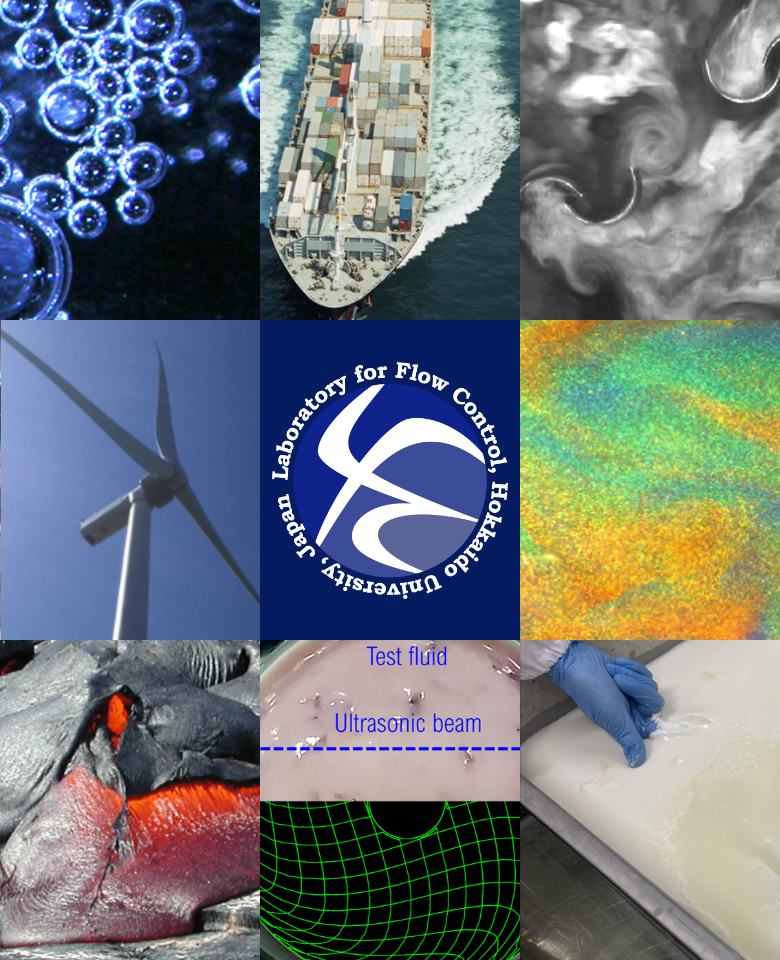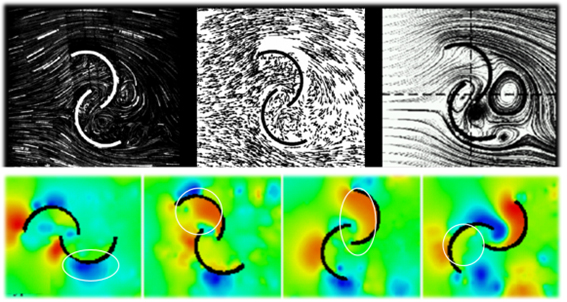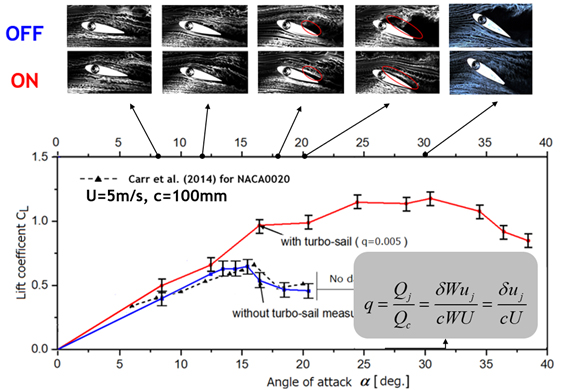

Laboratory for Flow Control-Fluid mechanics experiment for science & technology-

Wind turbines
Wind energy is expanding globally upon exponential manner due to strong demands to replacement of fossil fuel with renewable energy. Our laboratory has been investigating new technology to improve the aerodynamic characteristics of wind turbines in multiple perspectives. There are three types of wind tunnels to evaluate the performance, one of which is 1.8 m x 1.8 m x 5.0 m in test section with a maximum speed of 70 m/s: for safety we usually limit to 35 m/s for ordinary experiments. We have developed several new flow control techniques for different types of wind energy harvesters such as Savonius turbine[1], Darrieous turbine, propeller turbines, and lateral oscillating blades[2]. One of our well-cited paper is interaction of multiple turbines in closed arrangement causing extra power acquisition reported in 2011[3]. Recently, we proved that use of turbo-sail mechanism greatly improved the power coefficient of vertical axis wind turbines[4]. We also open the wind tunnel facility for industry to response to the daily demands such as safety analysis for various 3-D shaped objects subject to high-speed air flows [5].
- Murai et al. Measurement Science and Technology, 18, 2491-2503(2007)
- Tuckerm et al. Applied Energy, 268, 115014 (2020)
- Shigetomi et al. Renewable Energy, 36, 536-545 (2011)
- Uemura et al. JSME Energy and Power Eng. Conf., C122 (2021)
- Ashida et al. Trans. JSME, 86, 888, 1-12 (2020)





